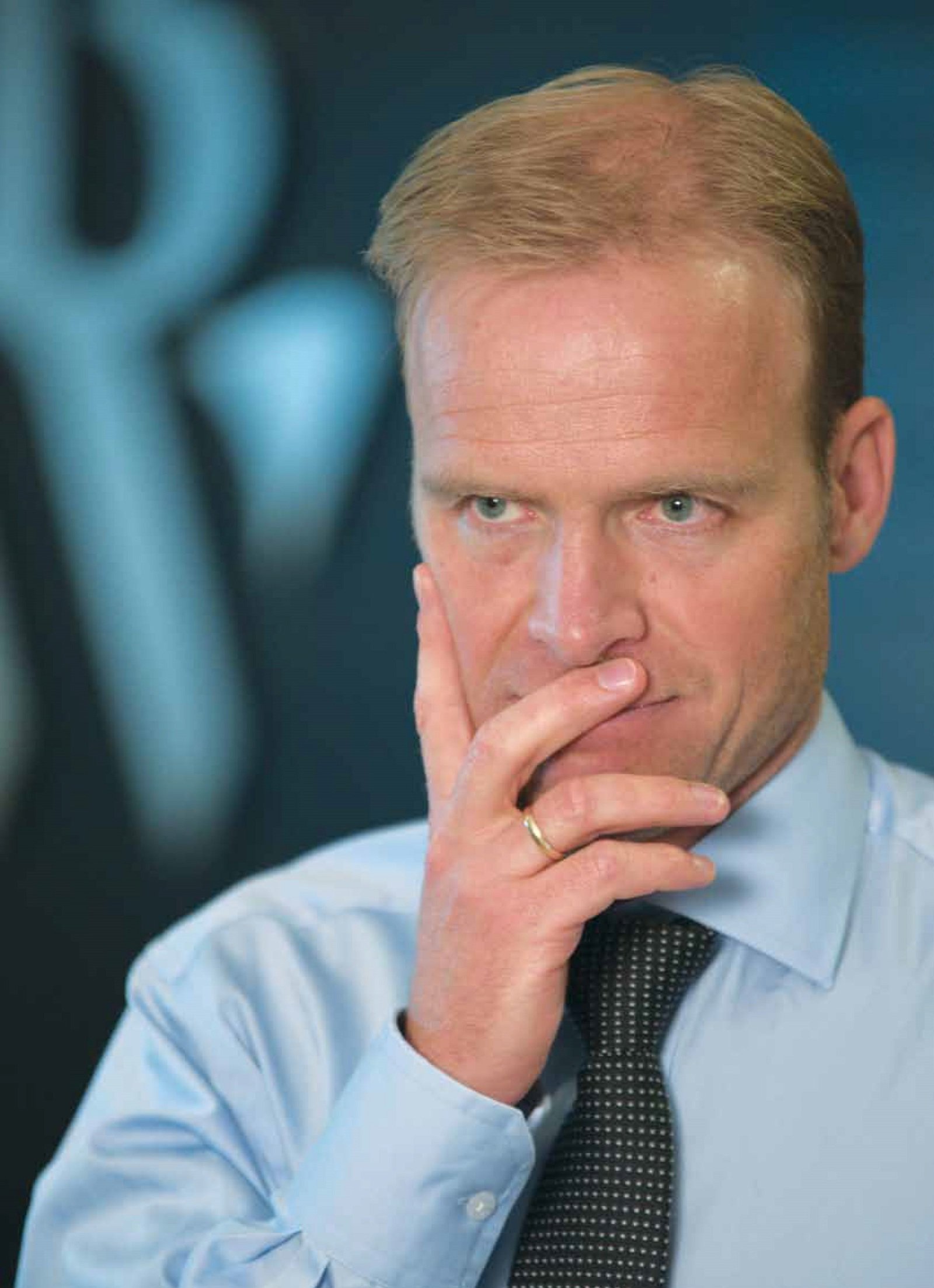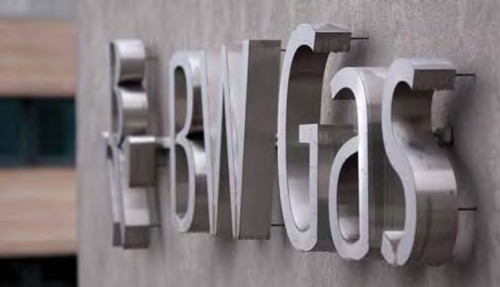
Nobody knows what the future will bring, but by installing cutting-edge maritime automation and monitoring systems BW Group can at least adapt to it in the most efficient and profitable way – for the environment, stakeholders and all company assets.
-
Text:Kongsberg Maritime Communication
-
Gunvor Hatling MidtbøVice President, Communications
BW Group’s newbuilding programme shows the scale of its ambitions. The global shipping leader, which currently controls over 150 vessels serving the energy industry, is bolstering its fleet with the addition of some 30 ships that are yet to be delivered. Of these, the Oslo-based BW Gas division is overseeing the construction of two LNG carriers, two Floating Storage and Regasification Units (FSRUs), two LPG newbuilding programmes involving 12 VLGCs, and six LR1 Tankers.
It’s a huge task, and one that Erik Kardash is relishing.
Kardash is an Electro/Automation Engineer with the Newbuilding and Projects Department at BW Fleet Management, which manages about 80 vessels owned by BW Group. It’s his job to ensure that the aforementioned gas newbuilds have the electrical, navigation, communication and automation systems in place to optimise performance and support his employer’s ambitious plans. No pressure then.
“This isn’t a company that rests on its laurels. We’re focused on leading the way ahead; pushing new standards for efficient operations and sustainability.”

FULL STEAM AHEAD
Kardash, in a nice line of understatement, describes BW as “active” in the newbuild market, going on to explain that, despite the firm’s heritage of 75 years of segment success, it is more interested in looking forward than back.
“This isn’t a company that rests on its laurels,” he states. “We’re focused on leading the way ahead; pushing new standards for efficient operations and sustainability, and, in short, building the absolute best new vessels we can with the resources available. This approach will help the company maintain its leading position in the industry.
“Advanced maritime technology,” he adds, “has a key role to play in that.”
BW Group’s interest in adopting cutting edge solutions isn’t new. BW, through its Bergesen heritage, has a long history with Kongsberg Maritime technology that stretches back over 40 years. Bergesen was an early adopter of engine automation, while BW was the first shipping firm to install a Kongsberg Maritime Integrated Automation System (IAS) on a LNG tanker, the DSME2221 LNG River Orashi, which was delivered in 2004.
More recently, in 2011, the business introduced a holistic Energy Management Programme led by Erle Kristin Wagle, encompassing everything from fuel management, to electrical consumers and new training programmes to increase energy efficiency. In 2014 alone this initiative resulted in savings of USD 50million, while slashing group CO2 emissions by 10%.
It’s in this context that BW, and Kardash’s, latest efforts should be seen.
FULL PICTURE THINKING
Kardash has ten years of experience in the offshore sector and sees a key trend from that field now migrating to shipping.
“Offshore thrives on data,” he comments. “There is a vast amount available and this is shared between offshore facilities and onshore control centres to increase production efficiency. Shipping, by its nature, can be a conservative industry and it has taken time for companies in this industry to realise the full potential of data.
“Now, however, we are underway and, over the next five years or so, I can see far more vessels, led by newbuilds and upgraded vessels, implementing ways of analysing and sharing information. This is a key foundation of optimising performance throughout entire fleets.
“The next challenge is to structure the data and use it in a way that can cut fuel cost and emissions, as well as bolster company learning.”
He explains with an example: “For instance, if two similar vessels with the same trading pattern consume fuel differently, or in a case where a ship is involved in a near accident, it is now possible to easily gather relevant historical data from the vessels. Having this data is one thing, but you also need a system that can analyse it and contribute to enhanced company understanding. One approach is to have a system to analyse incidents, another is to have a programme that actively searches data from vessels and continuously works to improve each vessel.”
BW and Kardash are looking to KONGSBERG to empower this new reality. All BW Gas managed newbuilds will feature K-Chief marine automation systems, while the 12 LPG tankers will also feature the latest Information Management System from KONGSBERG, as a cross functional platform for decision-making and collaboration.
The modular K-Chief system will give the new vessels optimal monitoring and control abilities across key vessel functions such as power management, auxiliary machinery control, ballast/bunker monitoring and control, and cargo monitoring and control. Its easy installation, with extensive cabling reductions and reduced man-hours and building time, is an added boon for Kardash and his team.
K-Chief integrates with other KONGSBERG technology to facilitate a seamless flow of information across vessel systems has been designed to enable continuous access to primary vessel data for both on-board vessels and onshore facilities. Built on a secure, web-based structure it makes information freely available across a ship’s administrative network and in selected onshore offices.
Data can be displayed, organised and stored – broken down by sub systems such as engine monitoring or power management – while trends can be mapped, reports generated and information exported to selected third parties, for tasks such as planned maintenance. It bridges the gap between land and sea, capturing information and delivering insights that empower better decision-making.
“This is the future of shipping,” Kardash remarks. “By connecting systems and sharing information on board and onshore we can maximise operational efficiency, while minimising environmental impact and enhancing sustainability.
“In the future this information will be made available to every vessel, allowing our land-based organisation to individually moni tor speed, fuel consumption, trim and determine the best operational practices for any given vessel, on any given day or route.
“While the technology for this has already been implemented in onshore and offshore industries its advent in the shipping industry has been delayed. One of the reasons is that a vessel, by its very nature, is not connected to shore and needs to make its own operational decisions. A land organisation can give guidelines, but it is the Captain on board who takes responsibility for commanding the ship in a safe and efficient manner. A land organisation cannot sit with detailed levels of data and give daily, comprehensive instructions to a vessel, as is common on offshore oil and gas installations. However, a land organisation can learn from vessel data, give advice and assist in the cases when a vessel needs assistance.
GETTING CONNECTED
Kardash sees better connections between vessels and shore as imperative for future success. Communication infrastructure is one thing, with obvious benefits for crews – “in 10 to 15 years everyone will have phones with shore access in their cabins,” he says – but the ties that bind operations to onshore support have to be the tightest.
“Expertise has to be on hand when it’s needed, and often before the crew themselves are even aware it is needed,” he argues.
Kardash sees remote diagnostic support as essential. Online health monitoring of vessel systems and continual data collection allows for remote inspection and investigation, system updates and operational guidance – putting onshore expertise ‘virtually’ on board, 24/7.
This, he states, improves planning and predictability and that, crucially, leads to reduced downtime and costs over a vessel lifetime.
“All our new vessels with automation systems will be implementing remote support (Kongsberg Maritime’s K-Remote),” Kardash says.
“If we have the ability to collect and share information we have to exploit this to its fullest potential. That will lead to the best level of understanding – for us and our suppliers – and therefore, enhanced levels of performance into the future.”
The future is, understandably, a recurring theme for a man, and a fleet programme, focused on delivering results over the next 20 to 30 years. While that may be daunting for some, Kardash and BW appear to be taking it in their stride.
“20 years is not a long time in shipping,” he concludes, “at least for a long-term player like BW. Good decisions made in the past have put us in this strong position in the present, and the decisions we’re currently making for our newbuilds will hopefully repeat this positive pattern into the future.
“The potential for greater efficiency through technology is huge – and we can achieve this potential by providing the right people with the right technology. By adopting the best solutions now we put ourselves in the best position for what lies ahead."